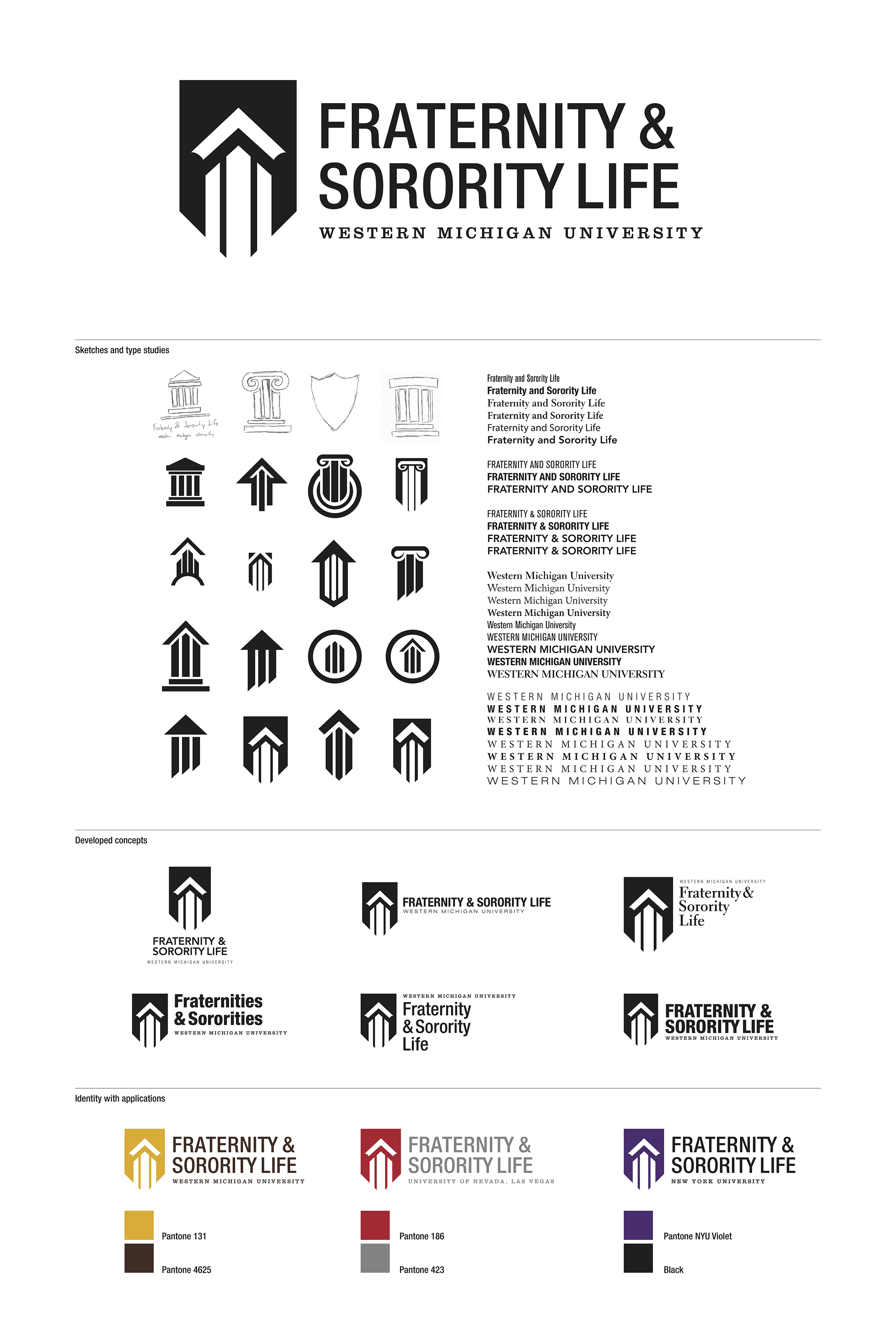
The Greek Campaign
Objective: how can help tell the local stories of fraternity and sorority life and its contributions to help staff, faculty, and unaffiliated students better understand the community?
With a professional and cohesive identity for fraternity and sorority life, an installation, and a hand-held artifact, this campaign is a start of fraternities and sororities telling their local stories at their universities and communities. The identity was later incorporated into the department at Western Michigan University.

Background Information
Fraternities and sororities have been an institution of higher education for centuries in the United States. The purpose of these organizations is to allow a student to be a part of something greater than themselves. Fraternity and sorority life is supposed to be an extension of ones collegiate education that helps their journey as a young adult. The reality for this community is that there are many stereotypes and stigmas that halt Fraternities and Sororities from succeeding at their highest potential. From hazing, to binge drinking, these stereotypes sadly still thrive and are interpreted in a negative tone through media. With the recent media and the currently existing stereotypes of fraternity and sorority life, there is a need for a positive campaign for this community. Fraternity and sorority life serves a great purpose in the colligate environment and can be better showcased to the local communities. There is an absolute need for a campaign to help bring the positive values out of fraternity and sorority life into the main media.
Intent and Audience
The targeted audiences are campus faculty, staff, and unaffiliated students. Fraternity and sorority life affects every aspect of higher education. The affiliated students are diverse, heavily involved, and the impacts made by Fraternities and Sororities extend all over the community. Unfortunately, some may view members of fraternity and sorority life and compare them to the stereotypes that are seen in the media. My goal is to begin the conversation with a more positive and less judgmental viewpoint when it comes to this community.

The Rush Process
My research began with interviewing both members and staff of fraternities and sororities and those populations who are not involved. When it came to the disconnect between organizations and universities, things were lost in transition and may have been unclear. I took this information and began looking at effective marketing strategies for an institution for higher education as well as guerilla marketing and design. The last piece of my research was compiling information that best represents the local benefits and contributions of Fraternities and Sororities. One of the parts I left out was anything that has to do with specifically national statistics. This has already been done multiple times and fails to leave any substantial effect on the local level.
My exploration begins with a rebranding. Fraternity and sorority life community needed a change to show the community that something new is here, a new age of fraternity and sorority life. The new identity needed to capitulate its values and purpose. The identity as a whole also needed to resonate higher education while still keeping a light and familiar tone to its design.
The next part of the design was researching and compiling important pieces of information for the installation and artifact. One of the things I kept in mind was how apparent did I want the stereotypes to be. In the end, I choose a direction that placed it bluntly in the front, but was contrasted by a positive contribution or quality of fraternity and sorority life. The handheld artifact correlated with the larger installation poster. Since there is not a specific location where all campus staff and faculty meet, the purpose of the handheld artifact is to have it reach as many of the target population as possible.
Throughout the process, I had to keep in mind my limitations of where I could use this on a college campus. Many posting locations on campus are consumed by flyers and ads. Along with that, I had to also create a system that could be interchangeable with various university names and color systems.


Go greek?
From the various people who have seen the identity and the installation, the overall reactions are positive. Students, staff, and faculty get a glimpse that fraternity and sorority life is more than just the stereotypes they hear. A big realization is that this sort of campaign is a huge endeavor. What the research, explorations, and results taught me was the extent and work it takes to rebrand a tarnished name. It is a much different concept than starting from scratch and really requires thought and development to clean up any faults to an identity.
The main thing discovered is that a brand can regrow and thrive in a new light. It just takes a bit of work, thorough research, and critical thinking and conceptualization to rebrand a once-strong name. Fraternity and sorority life can be reborn be a proud establishment of colleges and universities.